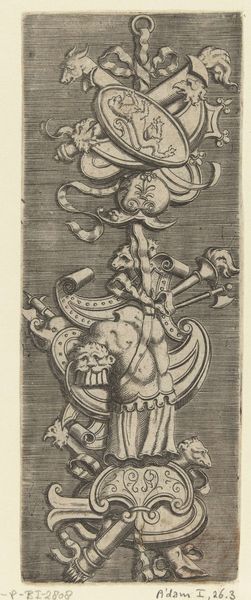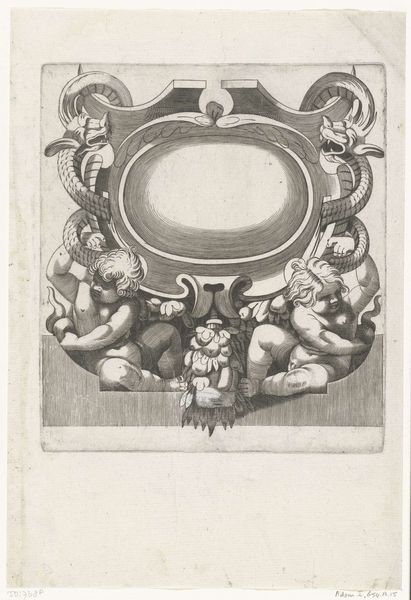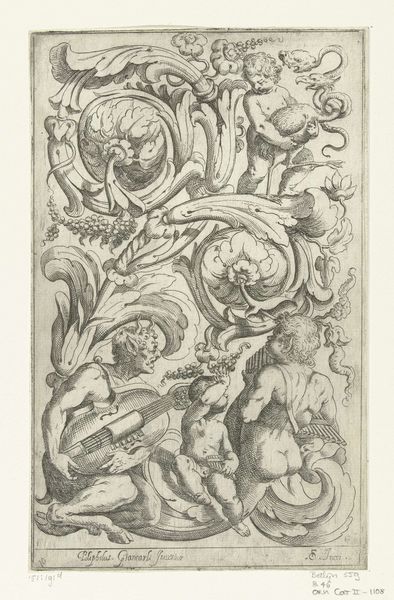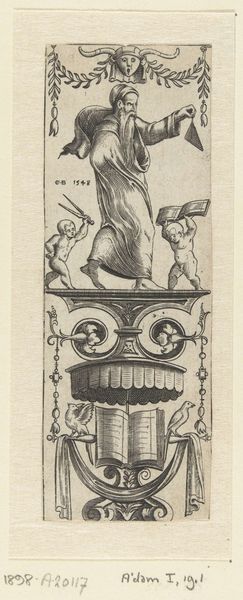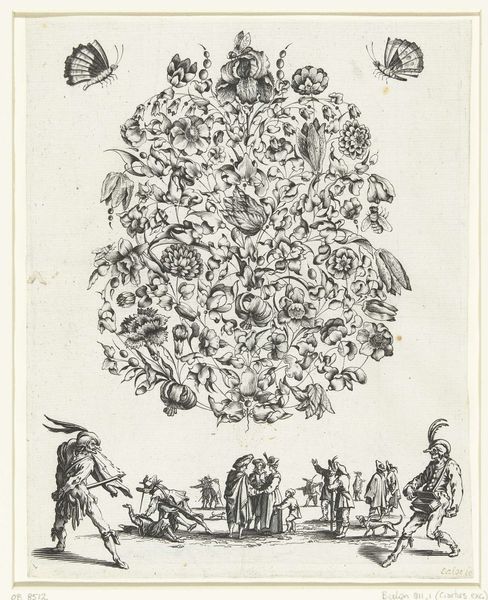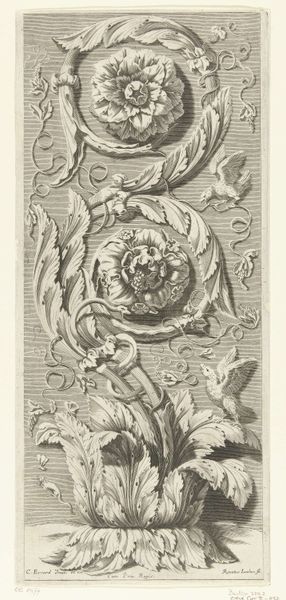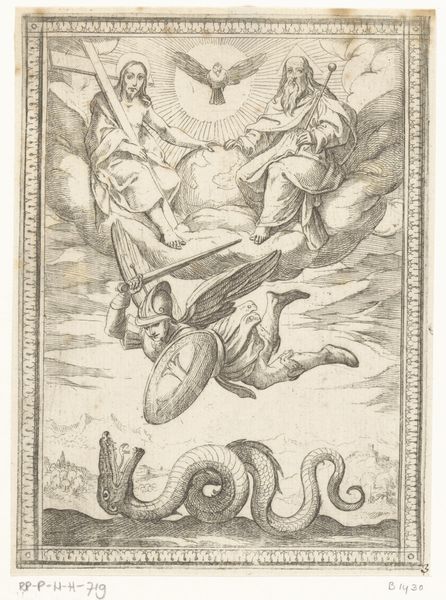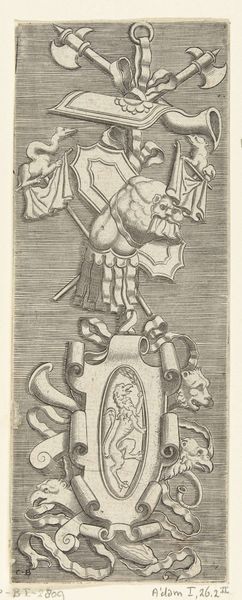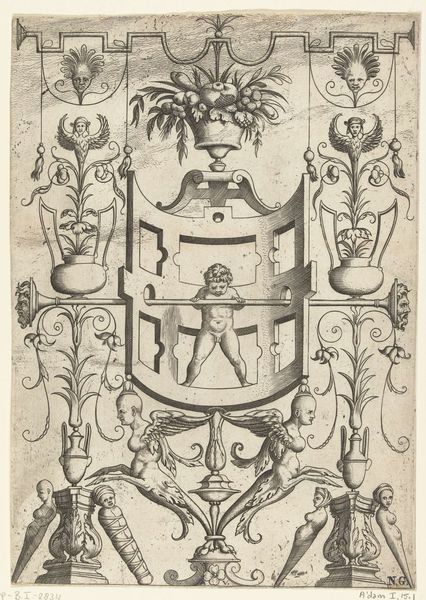
Cartouche met kleine engelen en materialen uit wolindustrie 1741 - 1820
0:00
0:00
Dimensions: height 117 mm, width 91 mm
Copyright: Rijks Museum: Open Domain
Curator: Here we have a print from between 1741 and 1820, currently held in the Rijksmuseum. It’s entitled “Cartouche met kleine engelen en materialen uit wolindustrie” which translates to “Cartouche with small angels and materials from the wool industry” by Abraham Delfos. Editor: My first impression is one of quaintness, and intense industriousness! Look at these busy little angels. The texture achieved in this small engraving is really impressive. Curator: It's quite an elaborate piece. The cartouche form itself, a decorative frame, was incredibly popular during this period. Visually, it signified importance or information to be highlighted. Its ornamentation suggests a deliberate symbolic layering related to the burgeoning wool industry of the time. We might analyze it through the lens of early economic systems, the social stratification implicit in manufacturing processes... Editor: Precisely. It's not *just* decorative. See how Delfos positions these *putti*, or cherubic figures? Each angel embodies an element of the industry: one operates the spinning wheel, another diligently records outputs, while others literally weigh the economic implications overhead holding scales. This imagery speaks to a collective understanding of societal pillars through religious archetypes. Curator: Absolutely, and if we consider feminist theories, we see how women's labor, traditionally associated with spinning and weaving, is essential, even personified through this cherubic, almost infantile form. We could read the angels measuring the products in top part as figures of accounting but also judgement in the industrial age. Editor: Indeed! Notice also that these aren't generic angelic figures; they carry very specific implements related to textile production. A rod of measurement, a balance... even the crossed keys above remind me of the symbol for commerce—binding agreement made real. Curator: And while on first glance, these details appear playful and celebratory, it becomes a site that demands intersectional analysis concerning power and class. One that connects the labor that comes from all of the human hands from wool into clothing for the rising middle class during this time. Editor: I’m left reflecting on how effectively artists have used symbology to embed narratives about value into what appear to be purely decorative art. Curator: For me, I am wondering how this ornamental piece implicates the viewer, then and now, in relation to economic production. Who exactly, I wonder, was meant to benefit from this angelic depiction of their work?
Comments
No comments
Be the first to comment and join the conversation on the ultimate creative platform.

